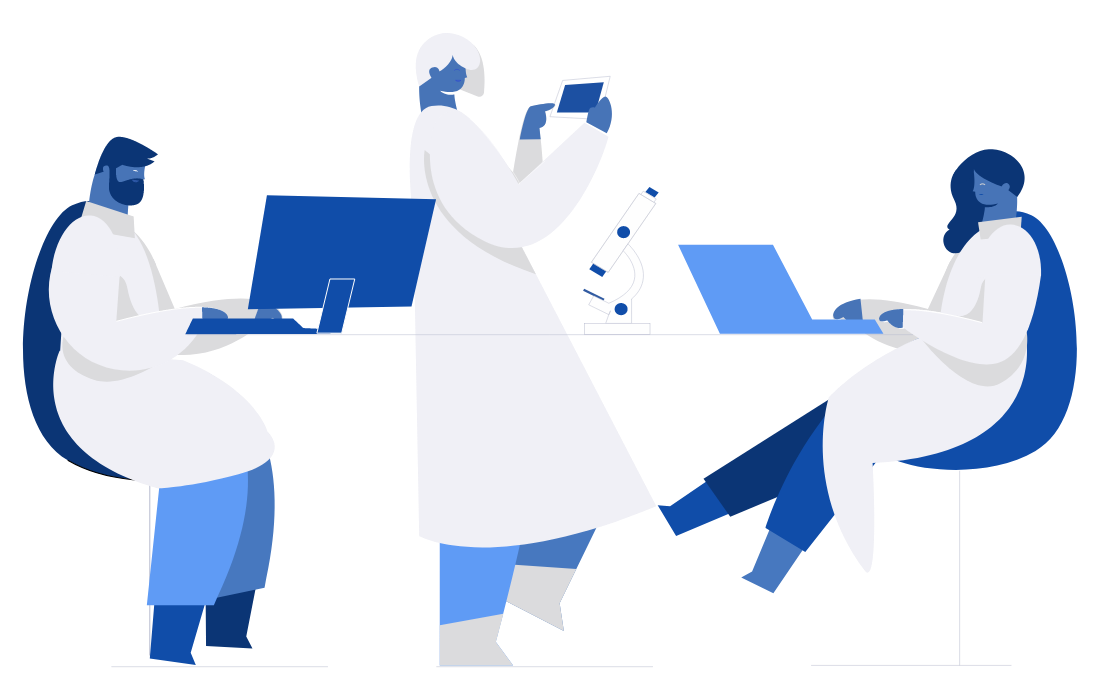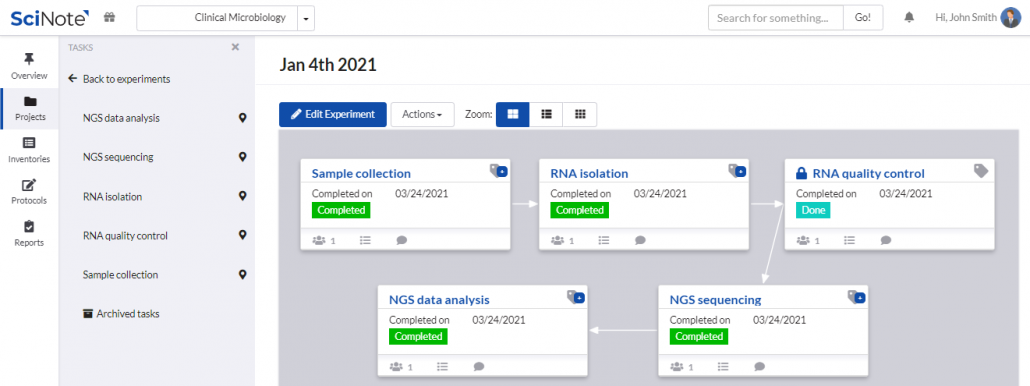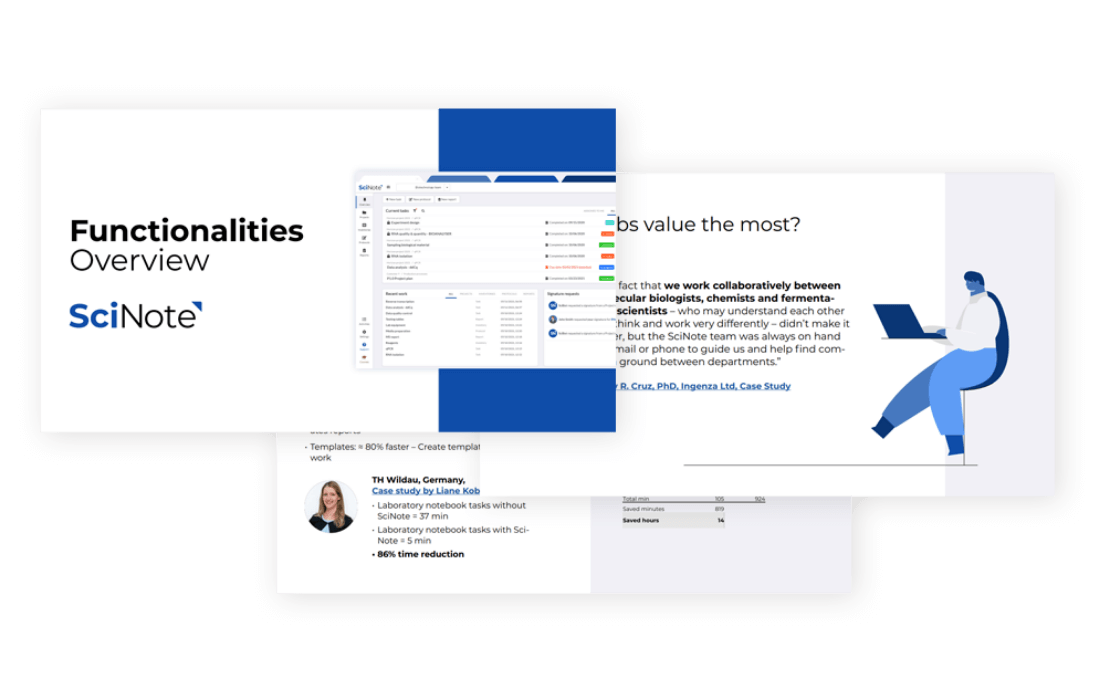Your lab is similar to this scenario:
A small lab performing a large number of experiments on human biological samples. Examples of experiments include single-cell RNA sequencing, screening with different panels of genetic or immuno markers, etc. Samples are typically of a similar or same type (e.g. cell lines with different genotypes) and typically each sample is processed in a different way. Work includes the design of experiments, wet-lab experiment execution, data analysis and sample management. Experiments can be performed for either in-house purposes or for customers.
Size: A growing, small/medium enterprise (SME), around 10 people to start with; no departments yet or a single department is using the ELN.
Keywords describing the example: Single-cell, sequencing, planning, experiments, data analysis, biological samples, biological specimens, molecular biology, Next Generation Sequencing, NGS, High-throughput Sequencing, HTS, screening.
Suggested SciNote structure:
Team
For you, the team is your research & development group. Team members are people who work on different (or same) projects and collaborate when needed.
Project
If each sample is processed separately and using a different method, for you, the projects can be grouped in project folders. Title of each project folder can be a method / technique used to process the sample.
In the project folder, projects can represent a collection of experiments that are executed in a specific period of time, for example in a quarter and can be named accordingly (e.g. Jan-Mar 2021, Apr-Jun 2021, Q1 2021, Q2 2021, etc).
Experiments
Each experiment within the project represents an on sample or a batch of samples and can be named with a date when the experiment started (e.g. 20th Feb 2021).
Tasks
Each experiment contains a simple workflow of e.g. 5 tasks i.e. 4 SOPs required to process the sample via the method you use (team you’re in).
To sum it up, your SciNote structure could be
Team 1: Your lab group
Project(s): Project folder name: Technique/Method 1, Projects inside the folder: Jan – March 2021/Q1 2021, March – June 2021, June – September 2021 etc.
Experiment(s): 15th January 2021 (20th January 2021, 10th February 2021, 18th February 2021 etc.)
Task(s): 5 SOPs required to process the sample via the method you use
Examples of additional functionalities that are helpful:
Copy as template – saving time when repeating experiments: When your next sample arrives and you decide what is to be done, you can copy the experiment as a template and reuse it, or copy one or all tasks as templates. Also, your protocols can be saved in the repository and used when and where needed.
Inventory management: Inventories in SciNote are lists (repositories, libraries) of whatever you need e.g. samples, equipment, reagents or something completely different. They are completely editable so your columns can contain names, ID codes, barcodes, files, dates and more. You can always add a new item to the inventory and then assign it to the task within the experiment. This means you will always have the full history of what has been done with each inventory item, one click away.
Get an entire overview of SciNote functionalites.
Can’t find what you are looking for?
Schedule a Q&A session with us to discuss the best option for your lab.






